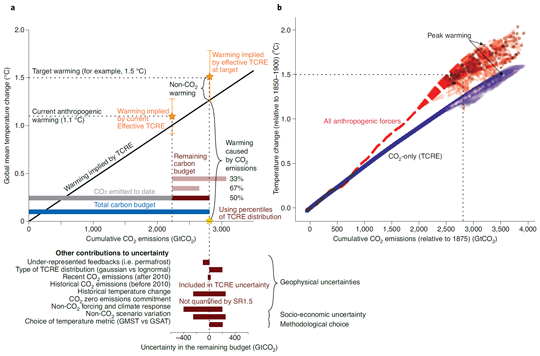Science Highlight
Opportunities and challenges in using remaining carbon budgets to guide climate policy
H. Damon Matthews, Katarzyna B. Tokarska, Zebedee R. J. Nicholls, Joeri Rogelj, Josep G. Canadell, Pierre Friedlingstein, Thomas L. Frölicher, Piers M. Forster, Nathan P. Gillett, Tatiana Ilyina, Robert B. Jackson, Chris D. Jones, Charles Koven, Reto Knutti, Andrew H. MacDougall, Malte Meinshausen, Nadine Mengis, Roland Séférian, and Kirsten Zickfeld.
Nature Geoscience, Published 30 November 2020
DOI:10.1038/s41561-020-00663-3
Paper Abstract
The remaining carbon budget represents the total amount of CO2 that can still be emitted in the future while limiting global warming to a given temperature target. Carbon budget estimates range widely, however, and this uncertainty can be used to either trivialize the most ambitious mitigation targets by characterizing them as impossible, or to argue that there is ample time to allow for a gradual transition to a low-carbon economy. Neither of these extremes is consistent with our best understanding of the policy implications of carbon budgets. Understanding the scientific and socio-economic uncertainties affecting the size of the remaining carbon budgets, as well as the methodological choices and assumptions that underlie their calculation, is essential before applying them as a policy tool. Here we provide recommendations on how to calculate remaining carbon budgets in a traceable and transparent way, and discuss their uncertainties and implications for both international and national climate policies.
Manuscript
Access paper: https://doi.org/10.1038/s41561-020-00663-3
Figures
 |
Relationship between the TCRE, the effective TCRE, and the total and remaining carbon budgets.PNG (1845 x 1217, 330kb)View ▶ Download ▼ |
